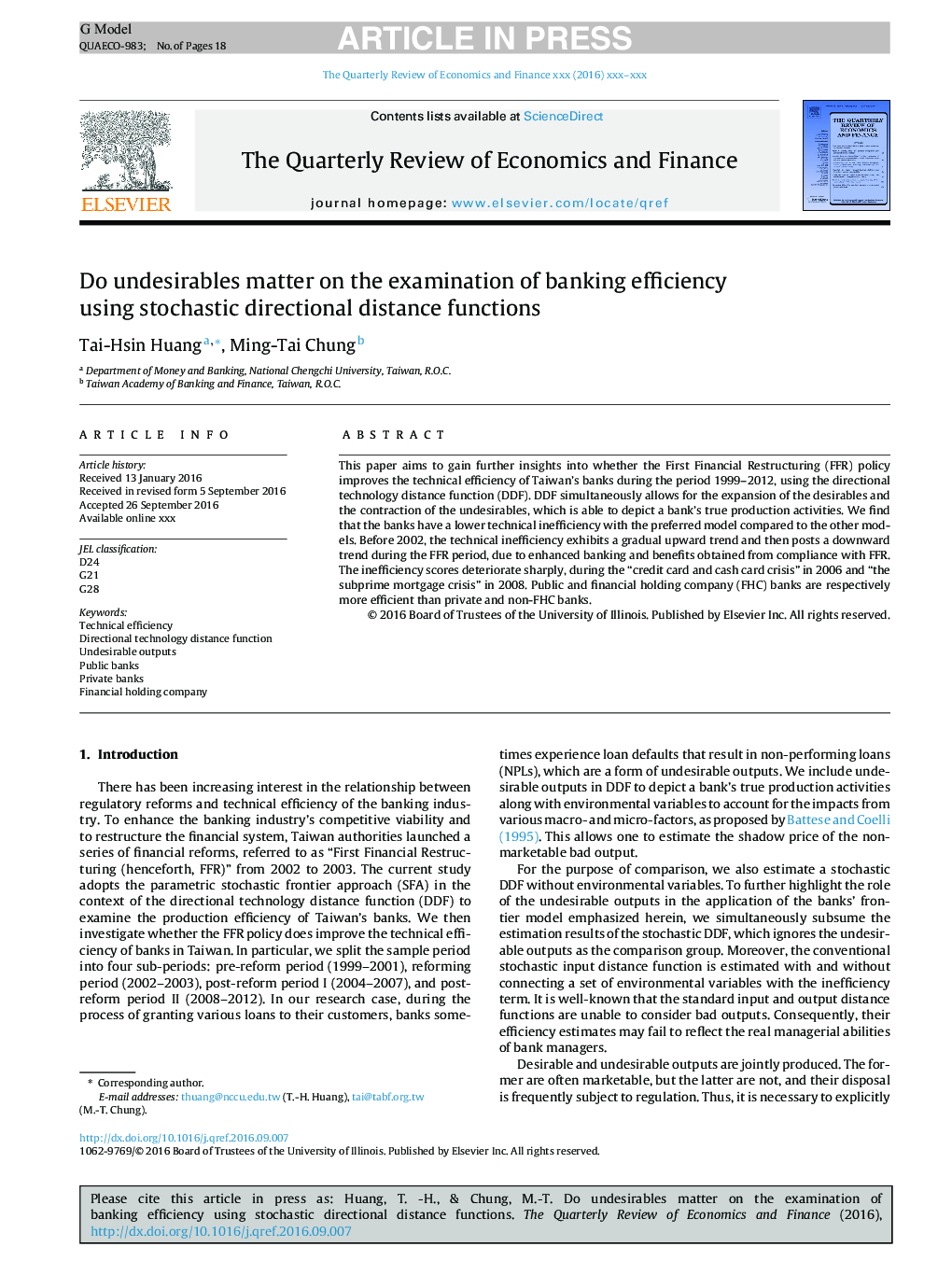| Article ID | Journal | Published Year | Pages | File Type |
|---|---|---|---|---|
| 5103558 | The Quarterly Review of Economics and Finance | 2017 | 18 Pages |
Abstract
This paper aims to gain further insights into whether the First Financial Restructuring (FFR) policy improves the technical efficiency of Taiwan's banks during the period 1999-2012, using the directional technology distance function (DDF). DDF simultaneously allows for the expansion of the desirables and the contraction of the undesirables, which is able to depict a bank's true production activities. We find that the banks have a lower technical inefficiency with the preferred model compared to the other models. Before 2002, the technical inefficiency exhibits a gradual upward trend and then posts a downward trend during the FFR period, due to enhanced banking and benefits obtained from compliance with FFR. The inefficiency scores deteriorate sharply, during the “credit card and cash card crisis” in 2006 and “the subprime mortgage crisis” in 2008. Public and financial holding company (FHC) banks are respectively more efficient than private and non-FHC banks.
Related Topics
Social Sciences and Humanities
Economics, Econometrics and Finance
Economics and Econometrics
Authors
Tai-Hsin Huang, Ming-Tai Chung,
